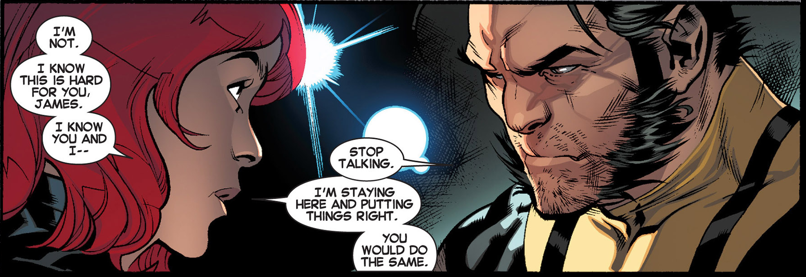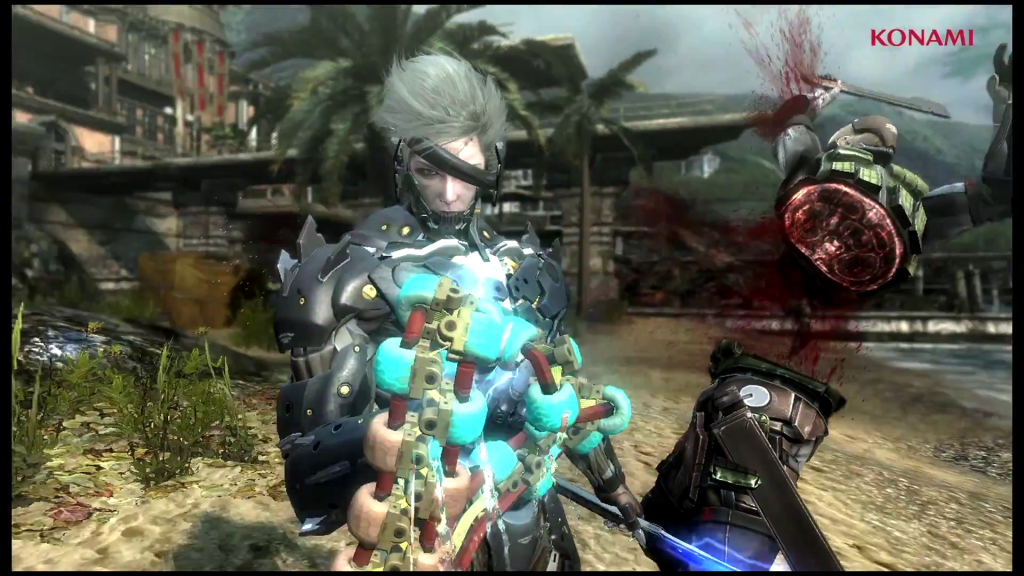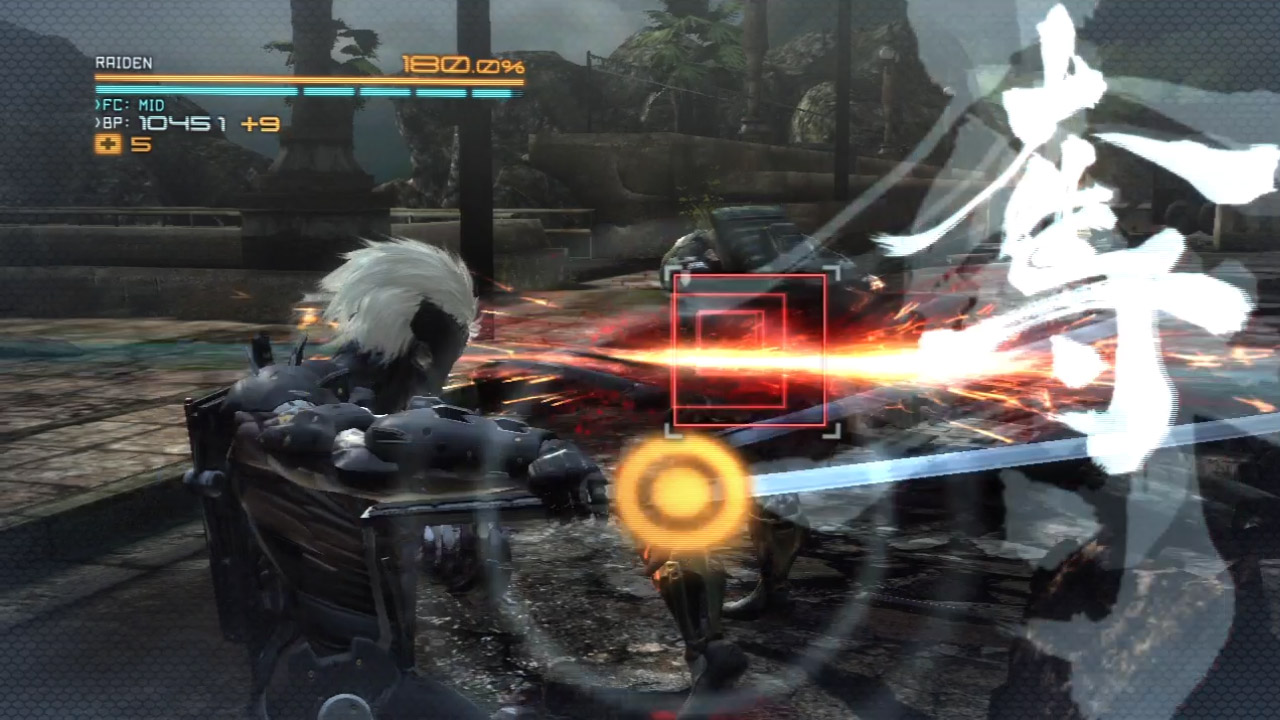I’m not
what you could call a ‘fan’ of Brian Michael Bendis. When he’s
tackling a group like The Avengers, I feel that his approach to
character dialogue often times doesn’t suit the less playful
characters like Steve Rogers or Bruce Banner.
Far from the first person to levy that criticism against the man, I’m certainly willing to admit that I do like humor and banter in my superhero books; it’s just that when that banter often times overpowers genuine character interaction I begin chomping my teeth and going into a kind of pubescent fit thinking “Christ can’t you fucks learn how to write an interaction that isn’t dripping in sarcasm.”
More than that, I’d probably be more inclined to say I’m upset at the host of younger writers taking the Bendis approach to things and not understanding how to actually apply it thoughtfully.
So while the approach doesn’t work for your daily nine-to-five Avengers; it never entirely felt at home with a cast of characters like the X-men, especially over the last few years.
If you haven’t been reading the X-men books (and I haven’t) you can definitely see that perhaps even more than the classic Days of Future Past that mutant-kind is basically settled into the idea of having an even worse future, just from catching up on the books through reading wiki.
When you flip through the pages of Uncanny circa a few years ago and characters are engaging in light banter that wouldn’t be out of place in one of those YA Sci-Fi novels that are so incredibly god damned popular these days; it creates a bit of narrative dissonance when you realize the group of killers and members of a dying race are engaging in a little verbal sparring.
Marvel isn’t above the lighthearted approach to their comics, and this isn’t really a take that towards the idea. There’s been a lot of success with Hawkeye recently, one of the best books they’ve come out with in recent years; it’s just that Bendis has always been better at writing teenagers, and most of the important X-men are all adults now.
Arguably, it extends to even the more immature characters. Bendis is great when it comes to Spider-Man (though, he suffers from the all too common of making everyone sound the same) and characters like Kitty Pryde; who are willing to balance the seriousness of their lives with a little fun immaturity (not unlike most comic readers!)
Off the top of my head, I know I was definitely like that as a teenager and most of the people I know below the age of 18 still certainly are, it’s not really something that changes with time.
After all, the characters in those awful movies where people go back to high school are usually able to get along so well because they’re still immature shitheads.
This is where there would be an editor’s note rectifying that not all immature people are shitheads, that the two values are intrinsically related but not necessarily dependent on each other.
I’m my own editor though, so I’ll let the jokes about teenagers and comic fans slide.
You can tell Marvel was thinking of a new way they could tap Bendis teen-YA centric writing while also giving fans what they want, and in a completely under-handed house of ideas way, driving home the “be careful what you wish for” stance they seem to take when it comes to unveiling new storylines.
Example: Since Jean Grey died originally and came back (which actually only happened a few times.) Fans have wanted her back.
Far from the first person to levy that criticism against the man, I’m certainly willing to admit that I do like humor and banter in my superhero books; it’s just that when that banter often times overpowers genuine character interaction I begin chomping my teeth and going into a kind of pubescent fit thinking “Christ can’t you fucks learn how to write an interaction that isn’t dripping in sarcasm.”
More than that, I’d probably be more inclined to say I’m upset at the host of younger writers taking the Bendis approach to things and not understanding how to actually apply it thoughtfully.
So while the approach doesn’t work for your daily nine-to-five Avengers; it never entirely felt at home with a cast of characters like the X-men, especially over the last few years.
If you haven’t been reading the X-men books (and I haven’t) you can definitely see that perhaps even more than the classic Days of Future Past that mutant-kind is basically settled into the idea of having an even worse future, just from catching up on the books through reading wiki.
When you flip through the pages of Uncanny circa a few years ago and characters are engaging in light banter that wouldn’t be out of place in one of those YA Sci-Fi novels that are so incredibly god damned popular these days; it creates a bit of narrative dissonance when you realize the group of killers and members of a dying race are engaging in a little verbal sparring.
Marvel isn’t above the lighthearted approach to their comics, and this isn’t really a take that towards the idea. There’s been a lot of success with Hawkeye recently, one of the best books they’ve come out with in recent years; it’s just that Bendis has always been better at writing teenagers, and most of the important X-men are all adults now.
Arguably, it extends to even the more immature characters. Bendis is great when it comes to Spider-Man (though, he suffers from the all too common of making everyone sound the same) and characters like Kitty Pryde; who are willing to balance the seriousness of their lives with a little fun immaturity (not unlike most comic readers!)
Off the top of my head, I know I was definitely like that as a teenager and most of the people I know below the age of 18 still certainly are, it’s not really something that changes with time.
After all, the characters in those awful movies where people go back to high school are usually able to get along so well because they’re still immature shitheads.
This is where there would be an editor’s note rectifying that not all immature people are shitheads, that the two values are intrinsically related but not necessarily dependent on each other.
I’m my own editor though, so I’ll let the jokes about teenagers and comic fans slide.
You can tell Marvel was thinking of a new way they could tap Bendis teen-YA centric writing while also giving fans what they want, and in a completely under-handed house of ideas way, driving home the “be careful what you wish for” stance they seem to take when it comes to unveiling new storylines.
Example: Since Jean Grey died originally and came back (which actually only happened a few times.) Fans have wanted her back.
They’ve
gotten Phoenix, the Goblyn Queen, I’m sure a robot or something in
there to – the point is that people wanted Jean Grey back,
probably the Jean Grey they’d grown up reading.
Fans we’re also clamoring for good-guy Cyclops again, after he went all Magneto while Wolverine took over Xaviers school.
So, without a team of teens (heh) for Bendis to write and people wanting Jean Back, Marvel does the unthinkable in the first issue of All New X-men.
They bring the original X-men to the current Marvel timeline. Cyclops, Jean Grey, pre Kelsey-Grammar with hairplugs Beast, Archangel and Iceman.
It’s pretty daring and not to mention seems like it’s a move meant to make controversy just like the recent Superior Spider-Man but it also works incredibly well as a jumping on point for the Marvel Universe.
Out of the pages of the first few issues, you get to see the Marvel Universe as it is through the eyes of people that have yet to experience it. Bendis plays at having them retain their youthful optimism and balance it out with the core-casts anxiety of witnessing a world where for many of them, there was no happily ever after. A host of the drama comes from Jean Grey's role in a future where she's been dead for years.
You see a young Scott Summers on the verge of dedicating his life to Xaviers dream look the jaded, cynical older Scott Summers in the eye and ask him how he could do the things he’s done.
It’s smart, because the book shows you the things older Scott has done; it doesn’t try to cram too much into background details or text boxes. There are no “See Uncanny X-Men #456” boxes when a character mentions a Thing that happened. If it’s important, the book shows you, if it’s not, the story continues moving forward.
I have to applaud the pacing Bendis keeps, the story is almost necessitated because of how unsure the X-men are in regards to their role in the future. It’s made clear that they have misgivings about returning to their own time, intending to set right the future they’ve come across.
Wolverine displays a kind of hilarious amount of hypocrisy; he plays an almost watchdog-like role, deriding them for them wishing to stay when he (and the rest of the x-men) have gone mucking about in the future before trying to ‘fix’ it. Wolverines shitty-dad attitude highlights the reason the book works so well: It’s repeating a tried and true X-men formula of the team trying to save a ‘bad future’ except in this case the bad future is the one we’ve been reading for years.
All new X-Men is almost cartoonish in the way it depicts action. Stuart Immonen on art duties lends a vibrant, animated-series like look to Bendis’ feud-filled dialogue, there’s not a lot of scenes where the X-men aren’t bickering but Immonen does a great job of telling you about what the character feels just by the way they emote.
Probably his best work is drawing the young Jean Grey, who has to go from the quiet teenager she was in the original series into a fiery, stern adult before she's ready for leadership duties, taking over from a displaced and almost shy young Cyclops in a distinct role reversal from the 90's X-men that people probably remember Jean Grey from.
He takes them through body language from the X-men you might have known into much deeper characters; they’re in a world that’s very much not ready for them and they aren’t ready for, so it’s fun to see the young X-Men effectively biting off more than they can chew and reacting in not only the way they talk to each other, but the way they carry themselves.
All New X-Men, twenty or so issues in, continues to be a great way to jump into what Marvel’s doing right now with their Marvel NOW relaunch; while it's certainly not anything world-changing in the realm of comics, it's part of a more recent trend to only introduce hints of a larger comic-universe as they become relevant to the story. There are certainly more ways to tell the story, but All New X-Men is still a welcome addition to the Marvel Now lineup.
Fans we’re also clamoring for good-guy Cyclops again, after he went all Magneto while Wolverine took over Xaviers school.
So, without a team of teens (heh) for Bendis to write and people wanting Jean Back, Marvel does the unthinkable in the first issue of All New X-men.
They bring the original X-men to the current Marvel timeline. Cyclops, Jean Grey, pre Kelsey-Grammar with hairplugs Beast, Archangel and Iceman.
It’s pretty daring and not to mention seems like it’s a move meant to make controversy just like the recent Superior Spider-Man but it also works incredibly well as a jumping on point for the Marvel Universe.
Out of the pages of the first few issues, you get to see the Marvel Universe as it is through the eyes of people that have yet to experience it. Bendis plays at having them retain their youthful optimism and balance it out with the core-casts anxiety of witnessing a world where for many of them, there was no happily ever after. A host of the drama comes from Jean Grey's role in a future where she's been dead for years.
You see a young Scott Summers on the verge of dedicating his life to Xaviers dream look the jaded, cynical older Scott Summers in the eye and ask him how he could do the things he’s done.
It’s smart, because the book shows you the things older Scott has done; it doesn’t try to cram too much into background details or text boxes. There are no “See Uncanny X-Men #456” boxes when a character mentions a Thing that happened. If it’s important, the book shows you, if it’s not, the story continues moving forward.
I have to applaud the pacing Bendis keeps, the story is almost necessitated because of how unsure the X-men are in regards to their role in the future. It’s made clear that they have misgivings about returning to their own time, intending to set right the future they’ve come across.
Wolverine displays a kind of hilarious amount of hypocrisy; he plays an almost watchdog-like role, deriding them for them wishing to stay when he (and the rest of the x-men) have gone mucking about in the future before trying to ‘fix’ it. Wolverines shitty-dad attitude highlights the reason the book works so well: It’s repeating a tried and true X-men formula of the team trying to save a ‘bad future’ except in this case the bad future is the one we’ve been reading for years.
All new X-Men is almost cartoonish in the way it depicts action. Stuart Immonen on art duties lends a vibrant, animated-series like look to Bendis’ feud-filled dialogue, there’s not a lot of scenes where the X-men aren’t bickering but Immonen does a great job of telling you about what the character feels just by the way they emote.
Probably his best work is drawing the young Jean Grey, who has to go from the quiet teenager she was in the original series into a fiery, stern adult before she's ready for leadership duties, taking over from a displaced and almost shy young Cyclops in a distinct role reversal from the 90's X-men that people probably remember Jean Grey from.
He takes them through body language from the X-men you might have known into much deeper characters; they’re in a world that’s very much not ready for them and they aren’t ready for, so it’s fun to see the young X-Men effectively biting off more than they can chew and reacting in not only the way they talk to each other, but the way they carry themselves.
All New X-Men, twenty or so issues in, continues to be a great way to jump into what Marvel’s doing right now with their Marvel NOW relaunch; while it's certainly not anything world-changing in the realm of comics, it's part of a more recent trend to only introduce hints of a larger comic-universe as they become relevant to the story. There are certainly more ways to tell the story, but All New X-Men is still a welcome addition to the Marvel Now lineup.










